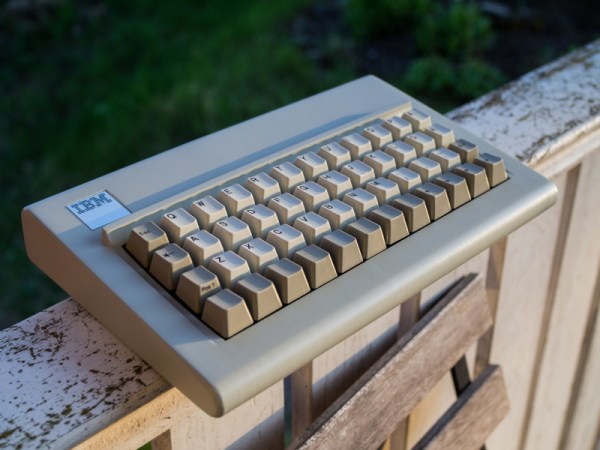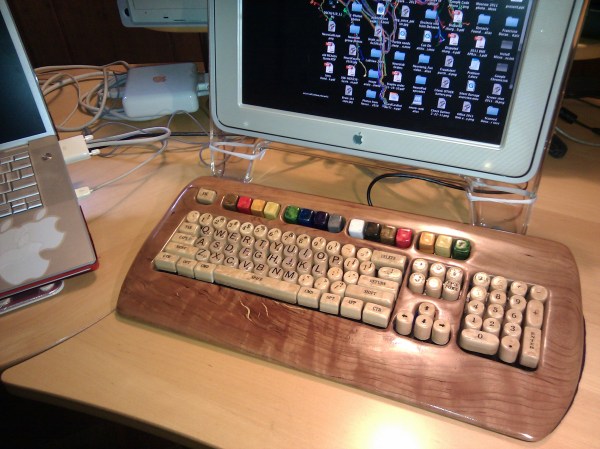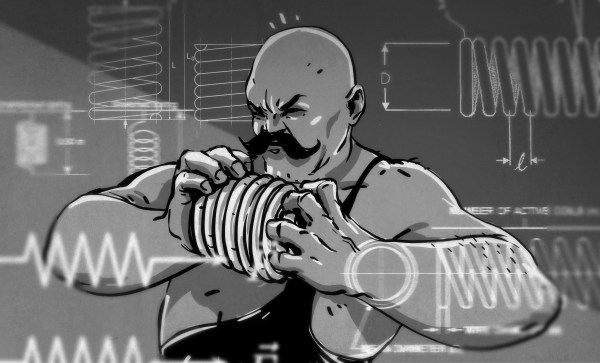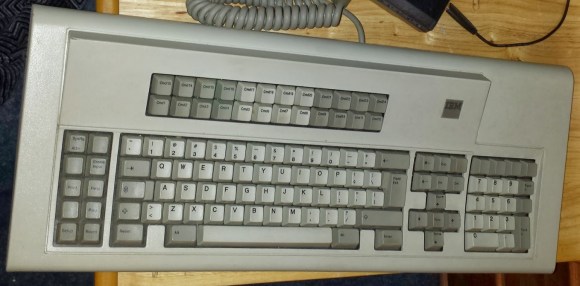Look closely at this beauty. No, that’s not a chopped IBM Model M or anything — it’s a custom 40% capacitive buckling spring keyboard with an ortholinear layout made by [durken]. Makes it easy to imagine an alternate reality where IBM still exists as IBM and has strong keyboard game, or one where Unicomp are making dreams come true for those who don’t need anywhere near 101 or 104 keys.
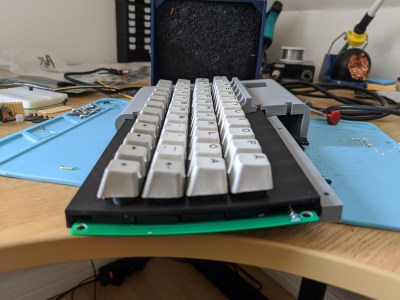 Buckling what now? This lovely board uses capacitive buckling spring switches from an old IBM Model F. Basically, every time you press a key, a little spring is bent over (or buckled) in the name of connectivity. In the capacitive version, the spring pushes a hammer onto a pair of plates, causing a change in capacitance that gets recognized as a key press. In this case, those key presses are read by a TH-XWhatsit controller.
Buckling what now? This lovely board uses capacitive buckling spring switches from an old IBM Model F. Basically, every time you press a key, a little spring is bent over (or buckled) in the name of connectivity. In the capacitive version, the spring pushes a hammer onto a pair of plates, causing a change in capacitance that gets recognized as a key press. In this case, those key presses are read by a TH-XWhatsit controller.
Using a Model F XT’s PCB as a guide, [durken] made a field of capacitive pads on one PCB, and made a second, ground plane PCB to avoid interference. In a true homage to these keyboards, [durken] decided to curve the PCB slightly, which naturally complicated almost everything, especially the barrel plate.
The solution was to make a separate barrel plate that slides into the case and gets screwed to the top via mounting bracket. For an extra bit of fun, [durken] mounted an SKCL lock switch under the IBM logo which enables solenoid mode. Be sure to check that out in the (updated!) video after the break.
One of the best things about a buckling spring keyboard is that each key sounds slightly different. Not so in solenoid mode, unless you were to use multiple solenoids.
Continue reading “Custom 40% Model F Keyboard Is 100% Awesome”

